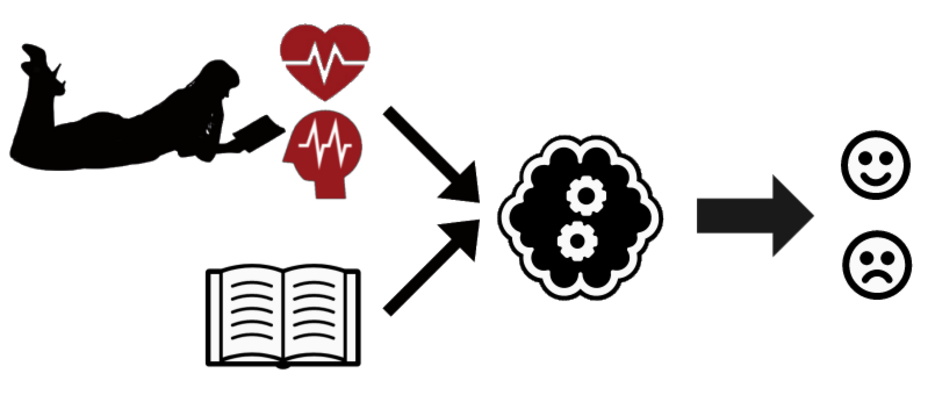Improving Sentiment Analysis with Biofeedback Data
23.06.2020Our paper "Improving Sentiment Analysis with Biofeedback Data" was recently published. In this cooperative work between the Data Science chair and the chair of Human-Computer-Interaction, we present an approach of incorporating biofeedback features derived from heart rate and brain waves signals. The biofeedback data was recorded from “Humans-in-the-Loop” to improve machine learning models on the tasks of sentiment analysis and sentiment detection.
Humans frequently are able to read and interpret emotions of others by directly taking verbal and non-verbal signals in human-to-human communication into account or to infer or even experience emotions from mediated stories. For computers, however, emotion recognition is a complex problem: Thoughts and feelings are the roots of many behavioural responses and they are deeply entangled with neurophysiological changes within humans. As such, emotions are very subjective, often are expressed in a subtle manner, and are highly depending on context.
This paper explores if and how we further can enhance sentiment analysis using biofeedback of humans which are experiencing emotions while reading texts. Specifically, we record the heart rate and brain waves of readers that are presented with short texts which have been annotated with the emotions they induce. Our findings suggest that the combination of several biosignals can improve the ability of a text-based machine learning model to detect the presence of sentiment in a text.
Currently, we are planning a larger scale follow-up study which can further reveal insights into the emotional thought process while reading texts.
If you’re interested in contributing to this exciting experiment, please contact the authors.
If you are interested in a more detailed description of our work, please have a look at our paper and the corresponding video presentation.


